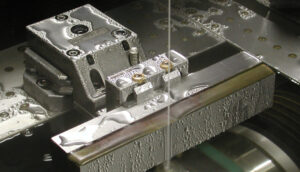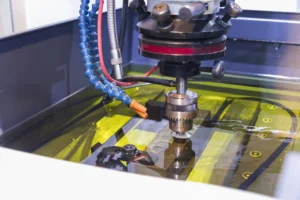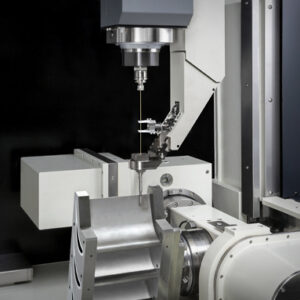Electrical Discharge Machining (EDM), also known as spark machining or spark eroding, is an advanced manufacturing technique that utilizes electrical sparks to machine hard materials that are difficult to handle with conventional cutting methods. This process is pivotal for creating intricate shapes and high precision parts in various industries, including aerospace, automotive, and medical devices.
 Wire EDM: Wire Electrical Discharge Machining involves using a thin metal wire, typically made of tungsten or coated copper, as an electrode. This method is ideal for cutting complex contours and detailed geometries with high precision. Wire EDM is divided into two categories: fast wire cutting, suitable for rapid, large-volume production, and slow wire cutting, which offers superior accuracy and surface finish.
Wire EDM: Wire Electrical Discharge Machining involves using a thin metal wire, typically made of tungsten or coated copper, as an electrode. This method is ideal for cutting complex contours and detailed geometries with high precision. Wire EDM is divided into two categories: fast wire cutting, suitable for rapid, large-volume production, and slow wire cutting, which offers superior accuracy and surface finish.
 Sinker EDM: Also known as die-sinking EDM, this method uses pre-shaped electrodes, commonly made of copper or graphite, to create cavities or intricate 3D shapes in workpieces. The electrode does not make direct contact with the workpiece; instead, both are submerged in an insulating liquid, and material is removed through electrical sparks. Sinker EDM is especially effective for complex molds, mold cavities, and high-precision.
Sinker EDM: Also known as die-sinking EDM, this method uses pre-shaped electrodes, commonly made of copper or graphite, to create cavities or intricate 3D shapes in workpieces. The electrode does not make direct contact with the workpiece; instead, both are submerged in an insulating liquid, and material is removed through electrical sparks. Sinker EDM is especially effective for complex molds, mold cavities, and high-precision.
 Hole Drilling EDM: This EDM type is used to create small, deep holes, particularly those that are challenging to machine using traditional drilling techniques. Hole drilling EDM employs small metal rod electrodes to penetrate workpieces under high voltage, making it highly valuable in fields such as aerospace, energy, and medical equipment, especially for machining hard-to-reach areas or extremely hard materials.
Hole Drilling EDM: This EDM type is used to create small, deep holes, particularly those that are challenging to machine using traditional drilling techniques. Hole drilling EDM employs small metal rod electrodes to penetrate workpieces under high voltage, making it highly valuable in fields such as aerospace, energy, and medical equipment, especially for machining hard-to-reach areas or extremely hard materials.
